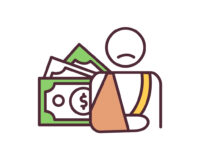Medicare TrOOP Costs: What Beneficiaries and Agents Need to Know
When it comes to Medicare Part D prescription drug coverage, there’s one term that often causes confusion but plays a big role in how much a beneficiary pays: TrOOP. In this post, we explain Medicare Part D TrOOP Costs and their effect on the client’s costs for prescription medication.
Whether you’re a Medicare beneficiary trying to understand your coverage or a Medicare agent helping clients navigate their plans, understanding TrOOP is essential.
What Is TrOOP
TrOOP (True Out-of-Pocket) costs refers to the amount a Medicare beneficiary pays for covered prescription drugs before reaching catastrophic coverage under a Part D plan. These costs include deductibles, copays, and coinsurance for medications covered by the plan.
TrOOP is used to track a beneficiary’s spending so that Medicare knows when to move them through the different Part D coverage phases.
What Counts Toward Medicare Part D TrOOP Costs
Not everything a beneficiary pays will count toward TrOOP. Only qualified out-of-pocket spending applies. Here’s what counts:
- Annual deductible (if applicable)
- Copays and coinsurance for formulary drugs (covered by your plan)
- Payments made by:
- The beneficiary
- A family member
- State Pharmaceutical Assistance Programs (SPAPs) or the Federal Government’s Extra Help Program.
What Doesn’t Count Toward Medicare Part D TrOOP Costs
Some expenses don’t count toward your TrOOP total, including:
- Monthly premiums for the Part D plan
- Drugs not covered by the plan (not on the plan’s formulary). Although, if the drug is approved via exception or appeal, it does count towards the TrOOP
- Over-the-counter (OTC) drugs
- Drugs purchased outside of the U.S.
- Payments by other insurance (e.g., employer group plans or TRICARE)
TrOOP and the 3 Phases of Part D
To understand how TrOOP affects drug costs, it helps to review the stages of Medicare Part D:
- Deductible Phase
- The beneficiary pays 100% of their drug costs until they meet the deductible.
- Initial Coverage Phase
- Beneficiaries pay copays or coinsurance, and their plan pays the rest until total drug costs reach the initial coverage limit.
- Catastrophic Coverage Phase
- After TrOOP reaches a set amount ($2,000 in 2025, increasing in 2026), the beneficiary pays $0 for covered drugs once they have hit the TrOOP under the new 2025 rules.
Agents are you looking to join a supportive FMO; click here for Crowe contracting
Take a look at what we have to offer our agents – watch a quick YouTube video
Key Takeaways for Beneficiaries and Agents
- TrOOP helps Medicare track spending to determine when beneficiaries qualify for better cost-sharing.
- Only qualified out-of-pocket costs count.
- In 2025, TrOOP maxes out at $2,000; a major win for Medicare enrollees.
- Medicare agents should explain TrOOP carefully when helping clients compare drug plans or estimate yearly costs.














Leave a Comment